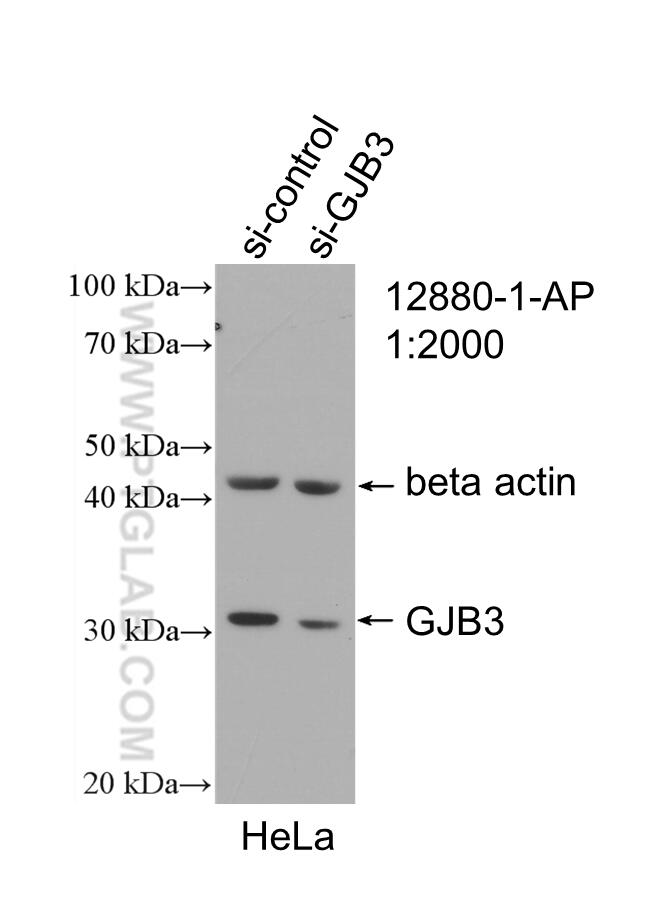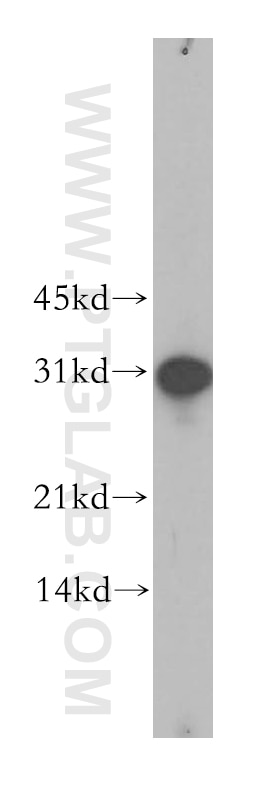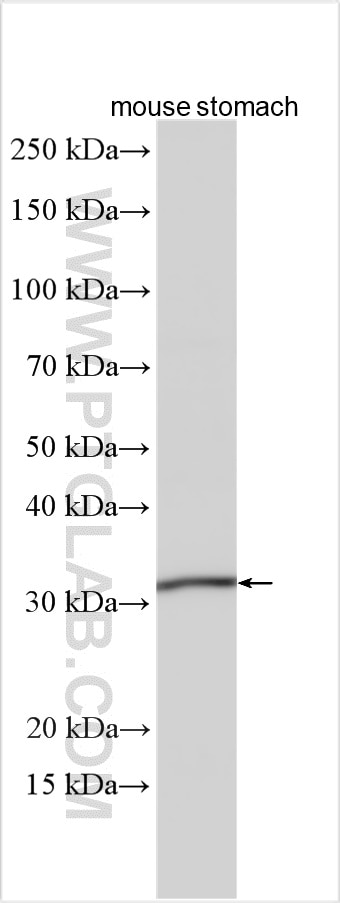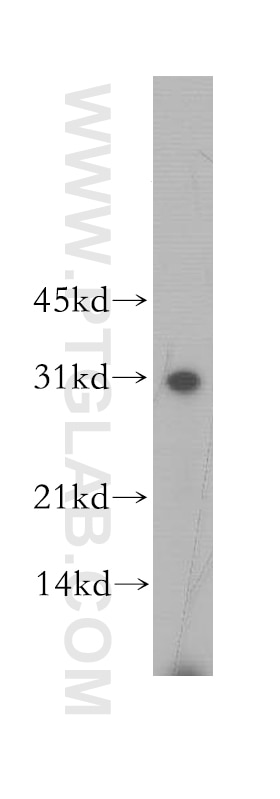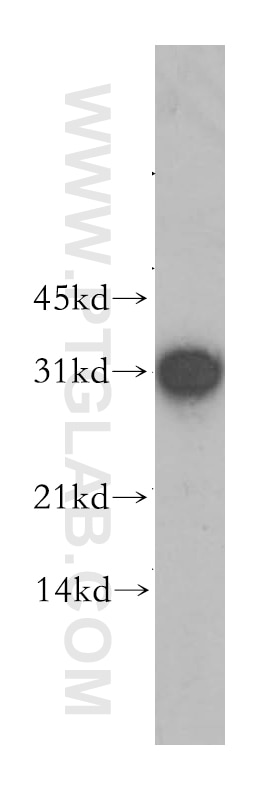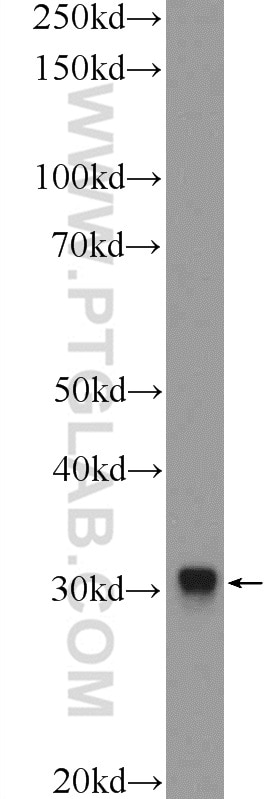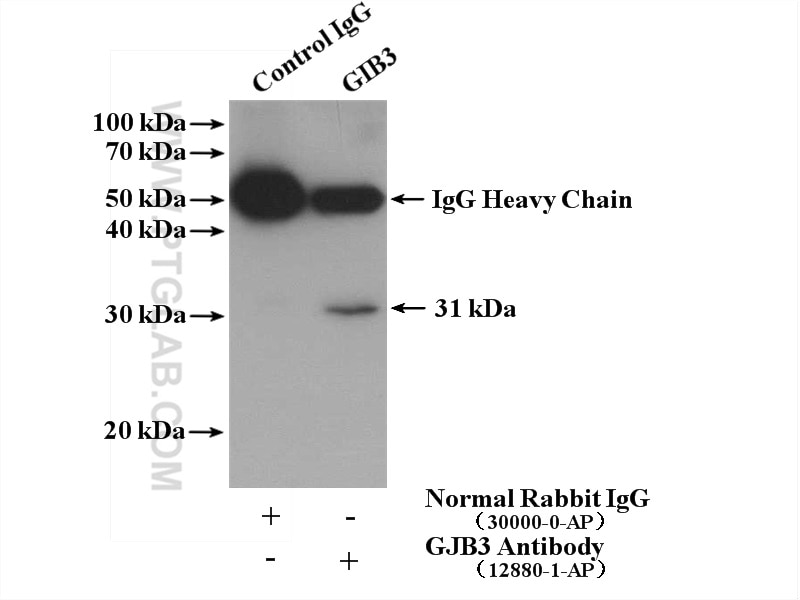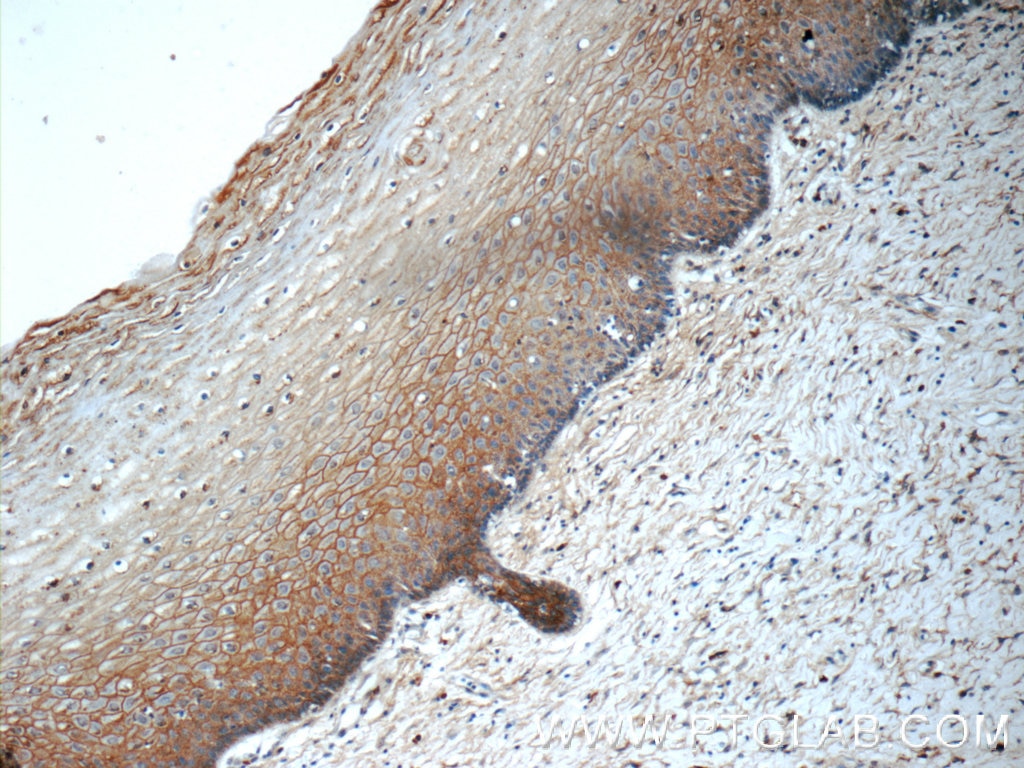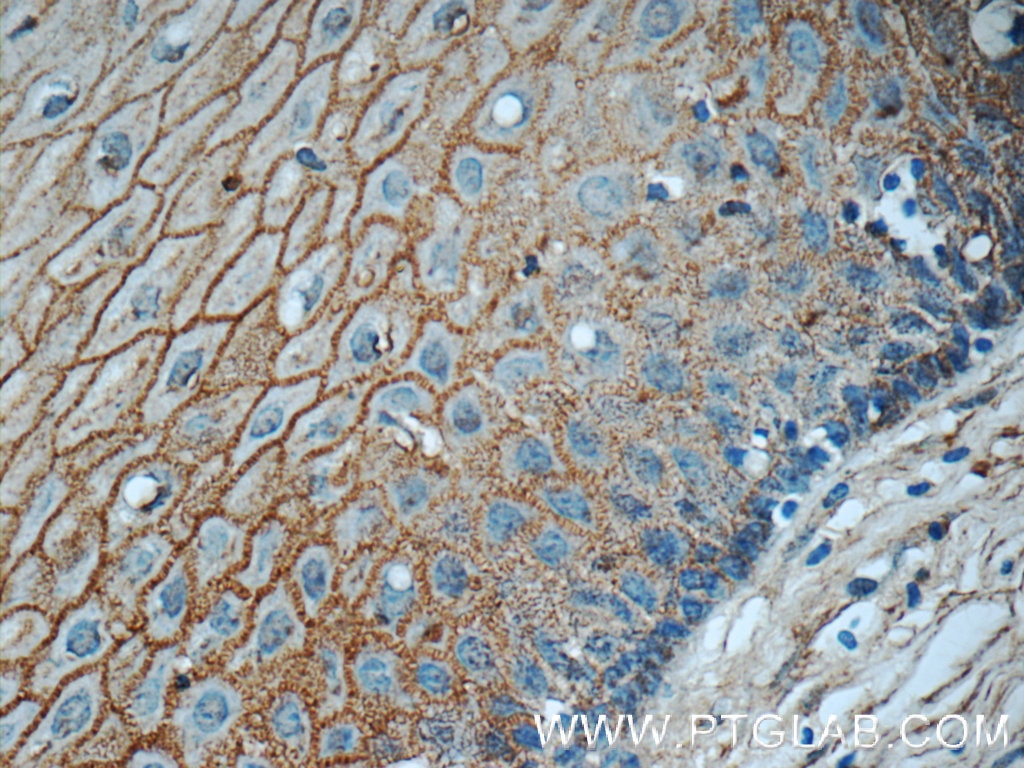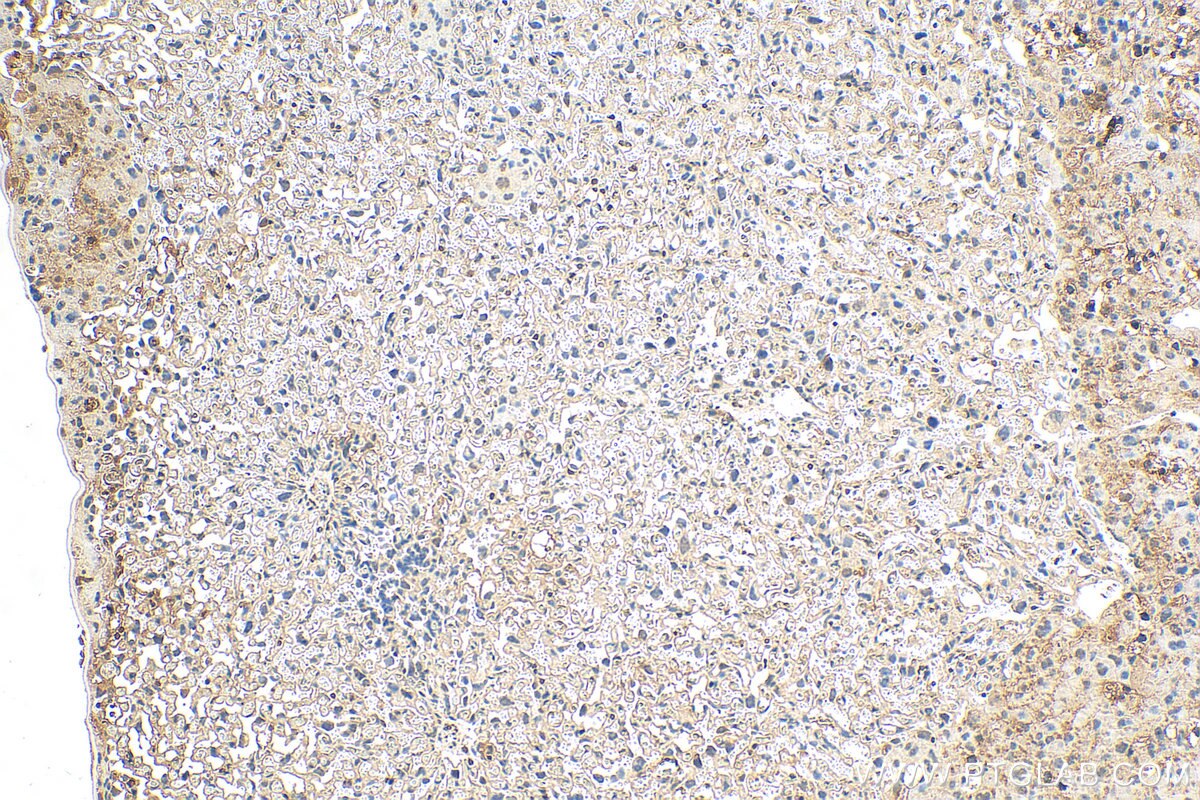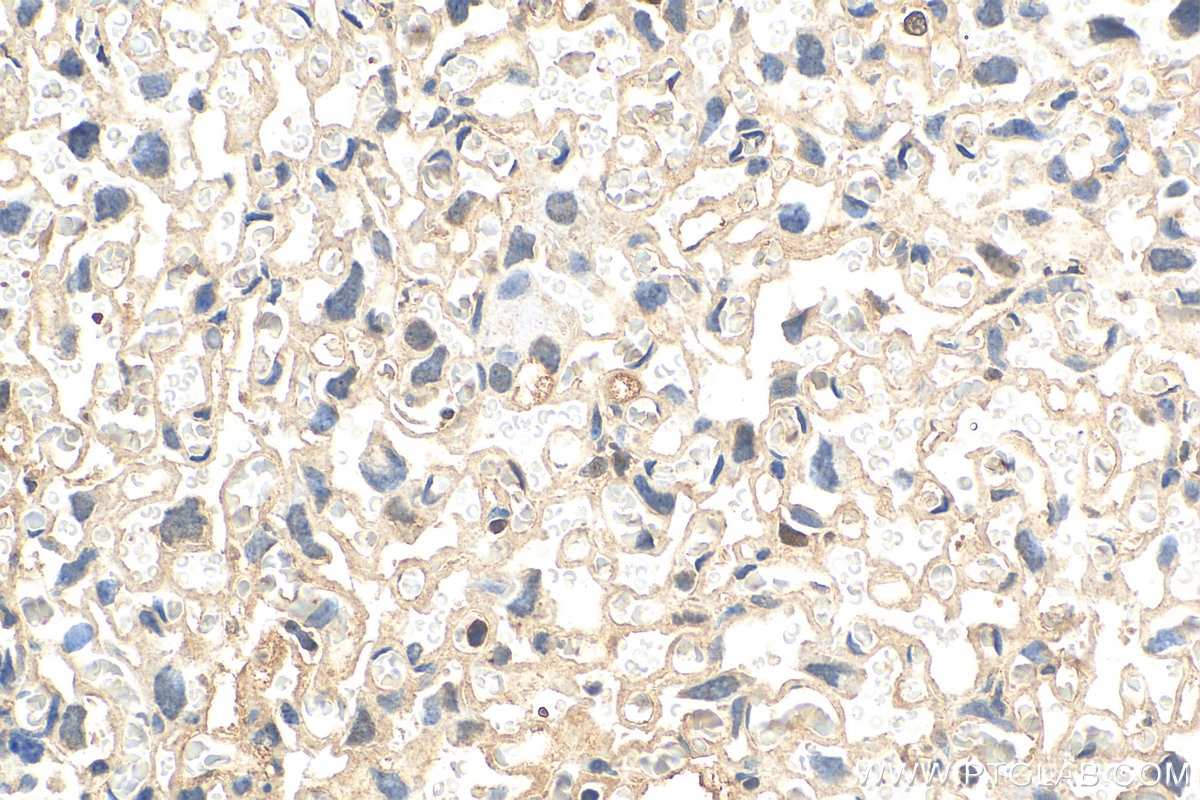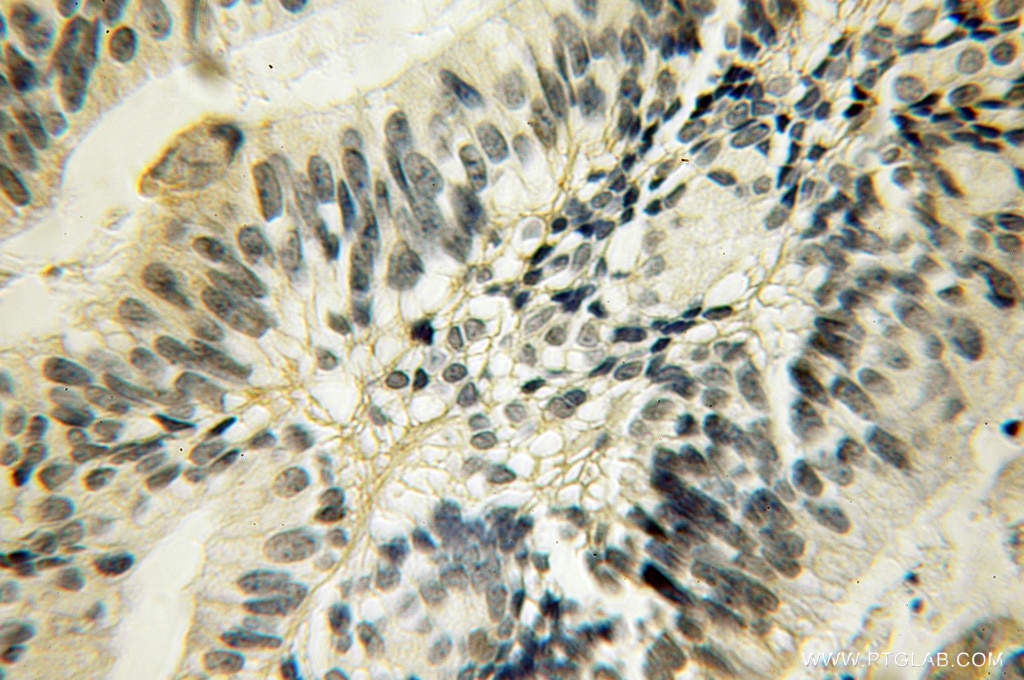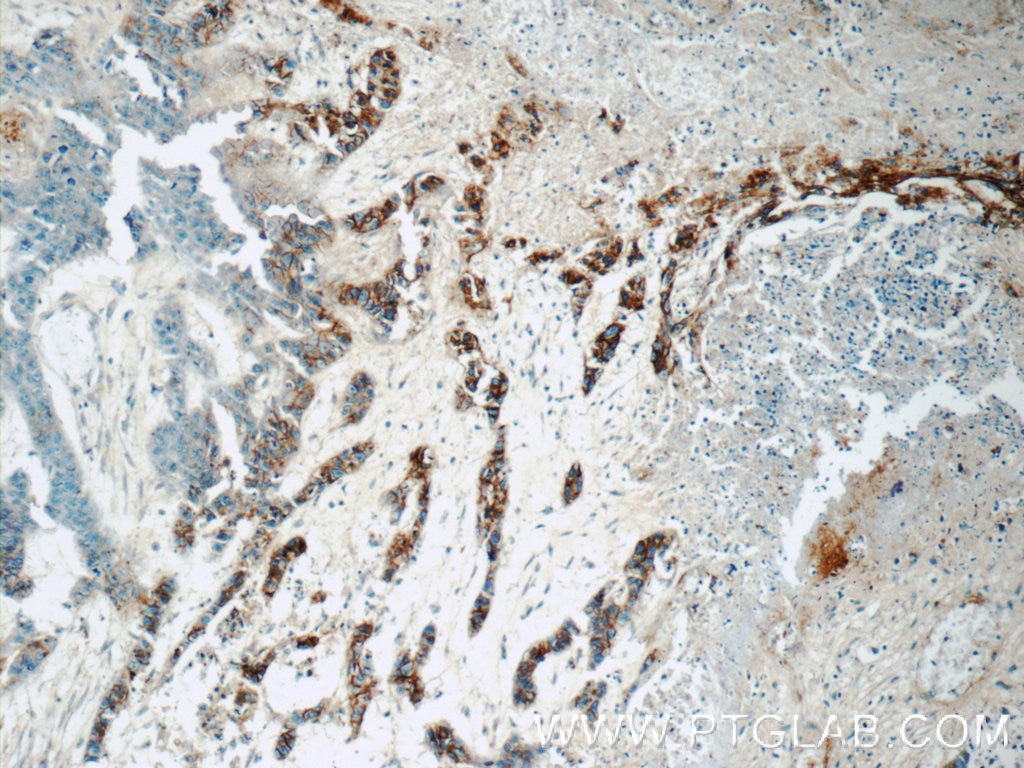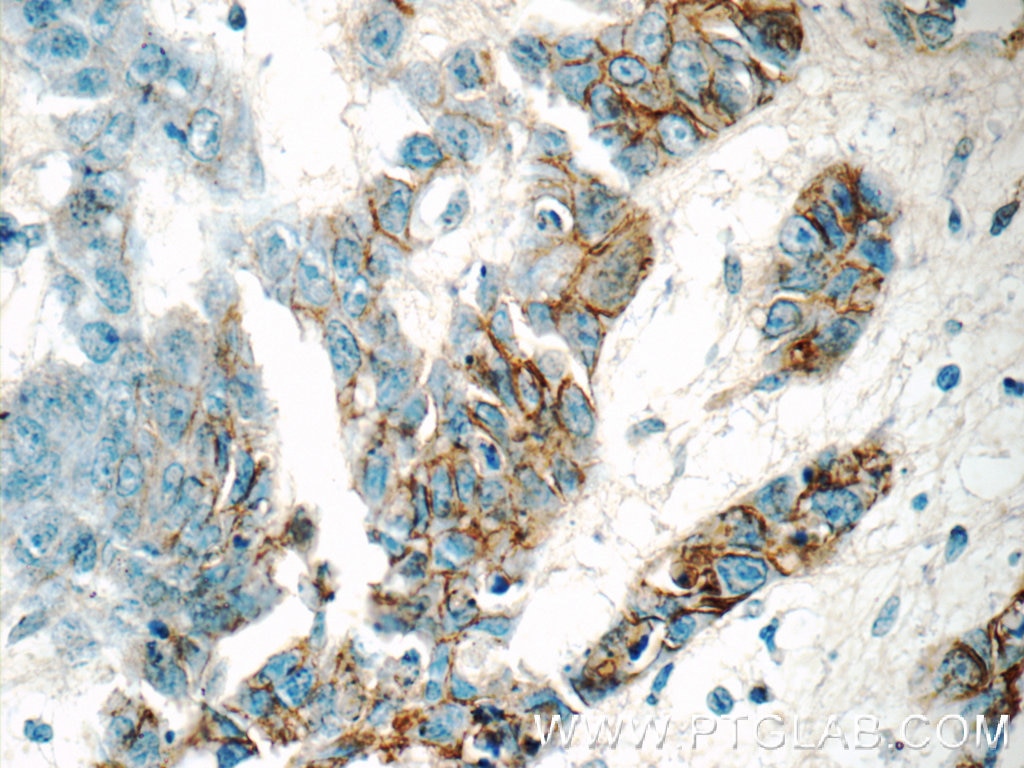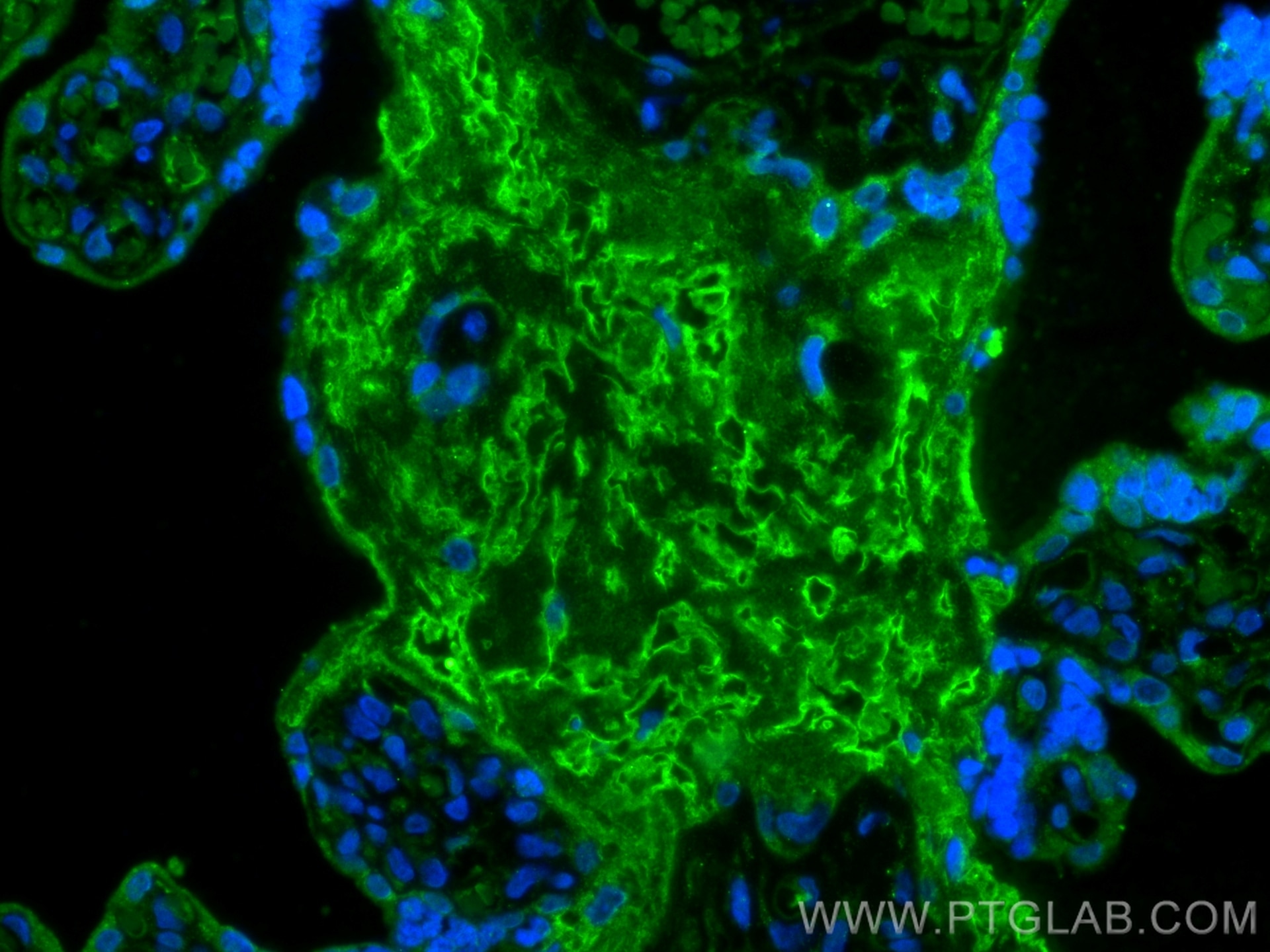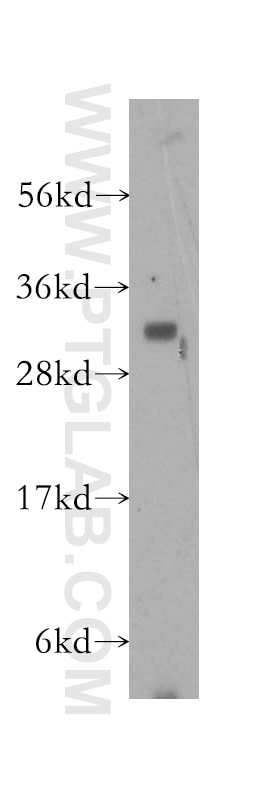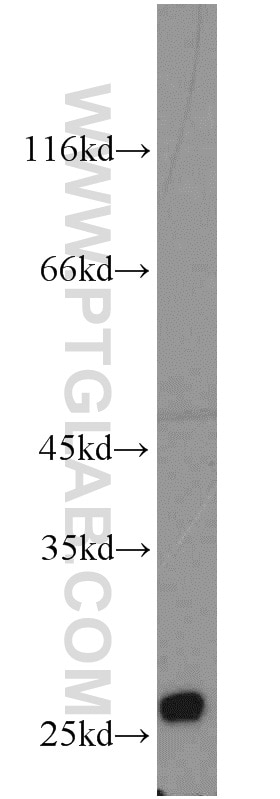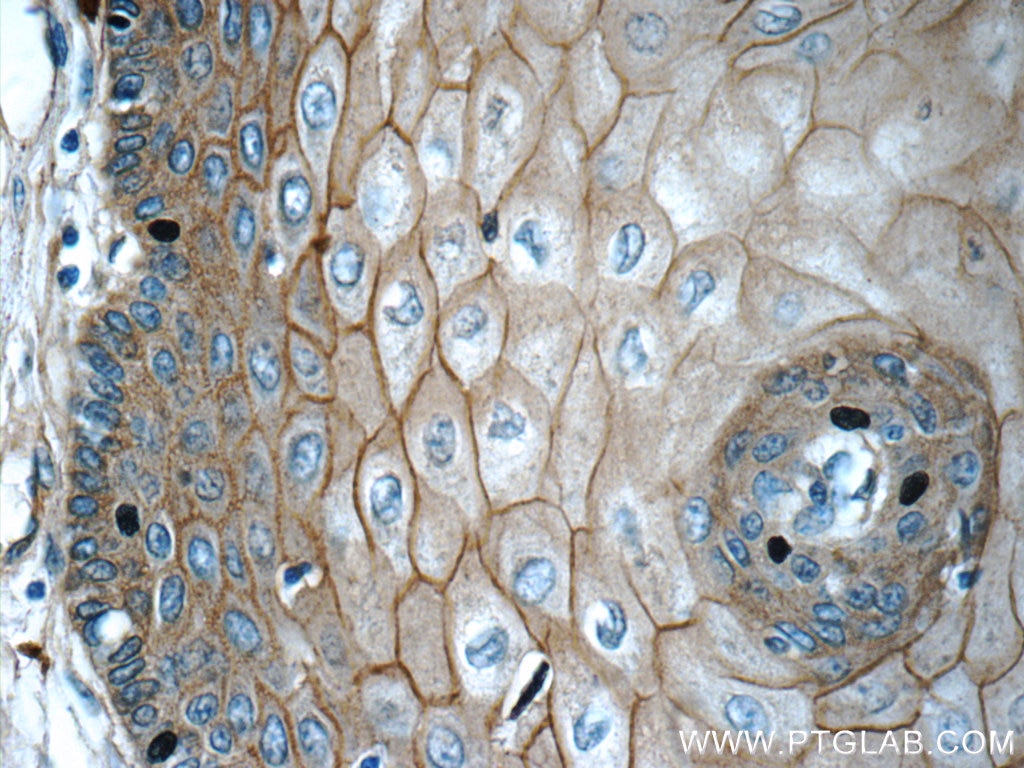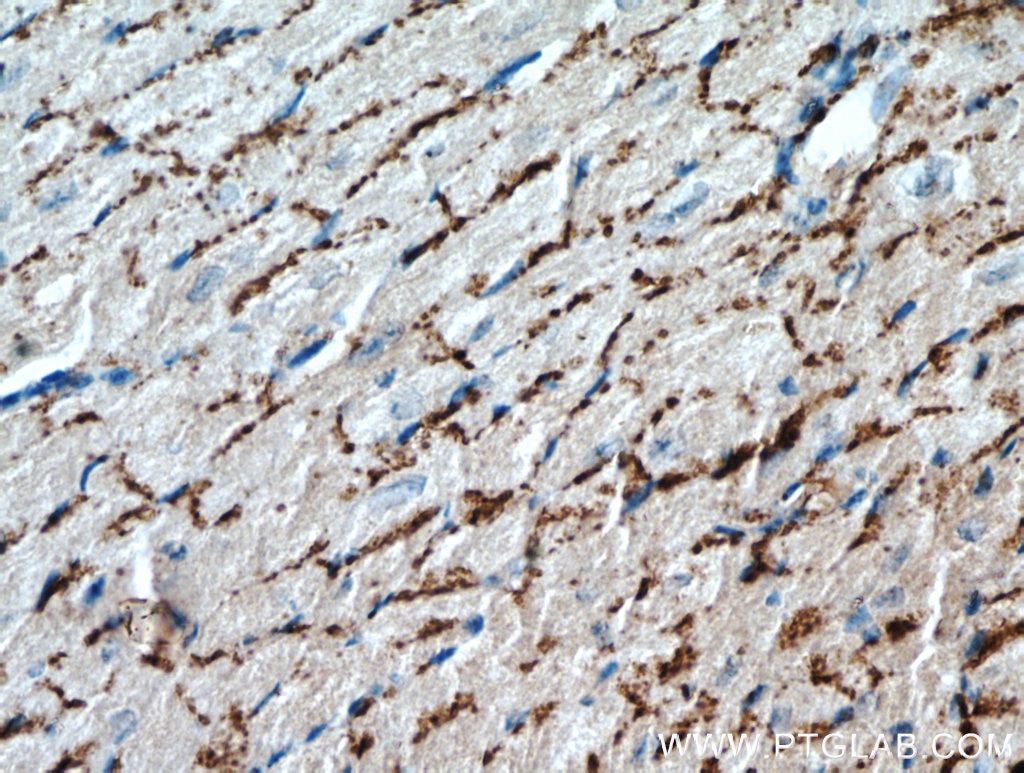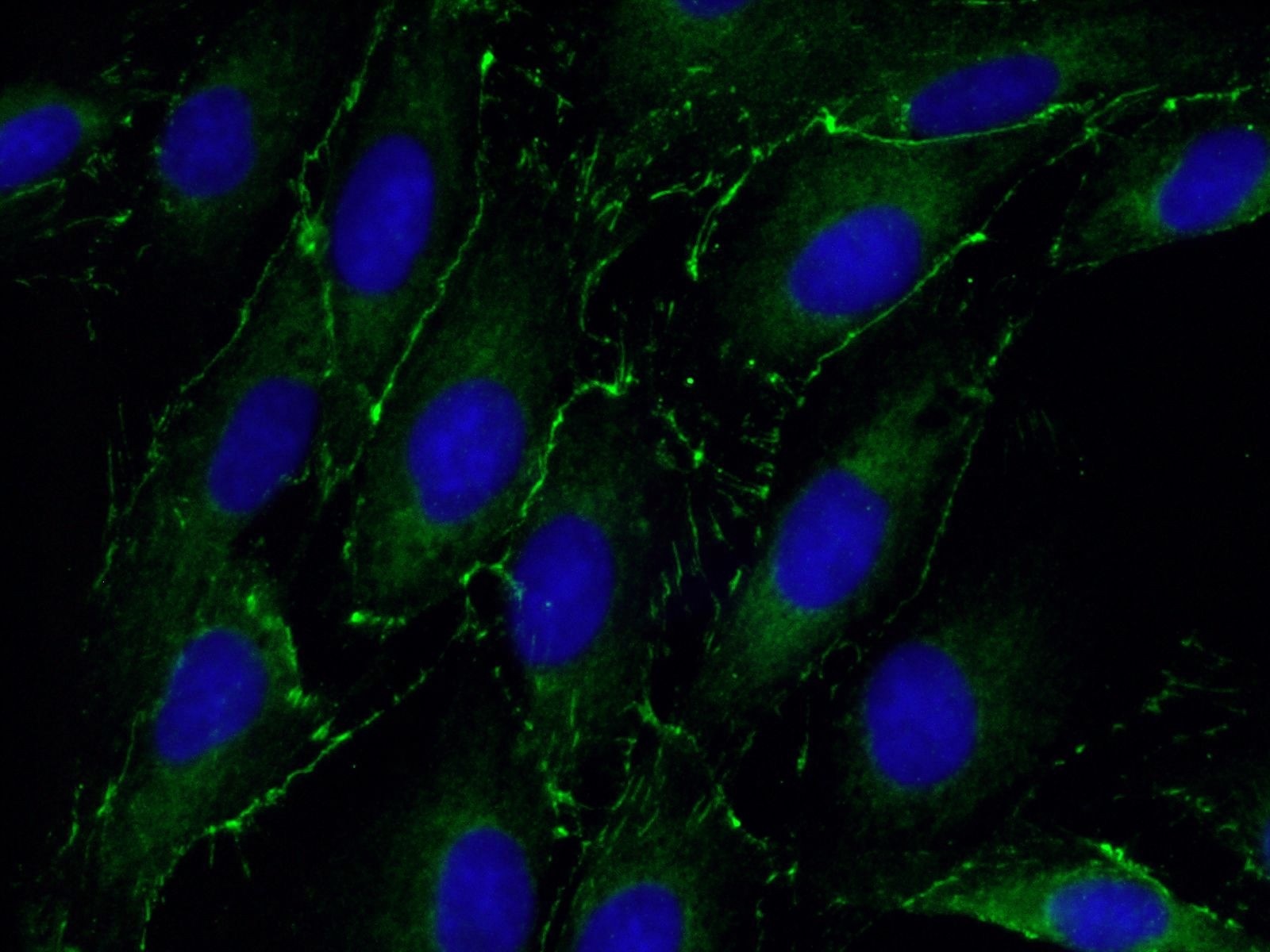- Phare
- Validé par KD/KO
Anticorps Polyclonal de lapin anti-GJB3
GJB3 Polyclonal Antibody for WB, IP, IF, IHC, ELISA
Hôte / Isotype
Lapin / IgG
Réactivité testée
Humain, rat, souris
Applications
WB, IHC, IF-P, IP, ELISA
Conjugaison
Non conjugué
N° de cat : 12880-1-AP
Synonymes
Galerie de données de validation
Applications testées
| Résultats positifs en WB | tissu d'estomac de souris, cellules HeLa, tissu ovarien de souris |
| Résultats positifs en IP | cellules HeLa, |
| Résultats positifs en IHC | tissu placentaire de souris, tissu de cancer de la peau humain, tissu de col de l'utérus humain, tissu de tumeur ovarienne humain il est suggéré de démasquer l'antigène avec un tampon de TE buffer pH 9.0; (*) À défaut, 'le démasquage de l'antigène peut être 'effectué avec un tampon citrate pH 6,0. |
| Résultats positifs en IF-P | tissu placentaire humain, |
Dilution recommandée
| Application | Dilution |
|---|---|
| Western Blot (WB) | WB : 1:1000-1:4000 |
| Immunoprécipitation (IP) | IP : 0.5-4.0 ug for 1.0-3.0 mg of total protein lysate |
| Immunohistochimie (IHC) | IHC : 1:50-1:500 |
| Immunofluorescence (IF)-P | IF-P : 1:50-1:500 |
| It is recommended that this reagent should be titrated in each testing system to obtain optimal results. | |
| Sample-dependent, check data in validation data gallery | |
Applications publiées
| KD/KO | See 1 publications below |
| WB | See 4 publications below |
| IHC | See 5 publications below |
| IF | See 3 publications below |
Informations sur le produit
12880-1-AP cible GJB3 dans les applications de WB, IHC, IF-P, IP, ELISA et montre une réactivité avec des échantillons Humain, rat, souris
| Réactivité | Humain, rat, souris |
| Réactivité citée | rat, Humain, souris |
| Hôte / Isotype | Lapin / IgG |
| Clonalité | Polyclonal |
| Type | Anticorps |
| Immunogène | GJB3 Protéine recombinante Ag3839 |
| Nom complet | gap junction protein, beta 3, 31kDa |
| Masse moléculaire calculée | 270 aa, 31 kDa |
| Poids moléculaire observé | 31 kDa |
| Numéro d’acquisition GenBank | BC012918 |
| Symbole du gène | GJB3 |
| Identification du gène (NCBI) | 2707 |
| Conjugaison | Non conjugué |
| Forme | Liquide |
| Méthode de purification | Purification par affinité contre l'antigène |
| Tampon de stockage | PBS avec azoture de sodium à 0,02 % et glycérol à 50 % pH 7,3 |
| Conditions de stockage | Stocker à -20°C. Stable pendant un an après l'expédition. L'aliquotage n'est pas nécessaire pour le stockage à -20oC Les 20ul contiennent 0,1% de BSA. |
Informations générales
GJB3, also known as Connexin-31 (Cx31), belongs to the connexin family. Connexins are membrane-spanning proteins that assemble to form gap junction channels that facilitate the transfer of ions and small molecules between cells. Mutations in the gene of GJB3 have been described in patients with dominant and recessive hearing impairment and in patients with erythrokeratodermia variabilis (EKV).
Protocole
| Product Specific Protocols | |
|---|---|
| WB protocol for GJB3 antibody 12880-1-AP | Download protocol |
| IHC protocol for GJB3 antibody 12880-1-AP | Download protocol |
| IF protocol for GJB3 antibody 12880-1-AP | Download protocol |
| IP protocol for GJB3 antibody 12880-1-AP | Download protocol |
| Standard Protocols | |
|---|---|
| Click here to view our Standard Protocols |
Publications
| Species | Application | Title |
|---|---|---|
Cell Rep Cochlear Cell Modeling Using Disease-Specific iPSCs Unveils a Degenerative Phenotype and Suggests Treatments for Congenital Progressive Hearing Loss. | ||
Stem Cells FBXL12-Mediated Degradation of ALDH3 Is Essential for Trophoblast Differentiation during Placental Development. | ||
J Neurosci Glial-Specific Deletion of Med12 Results in Rapid Hearing Loss via Degradation of the Stria Vascularis. | ||
Sci Rep Distinct Expression Patterns Of Causative Genes Responsible For Hereditary Progressive Hearing Loss In Non-Human Primate Cochlea. | ||
Placenta In vitro fertilization causes excessive glycogen accumulation in mouse placenta. | ||
